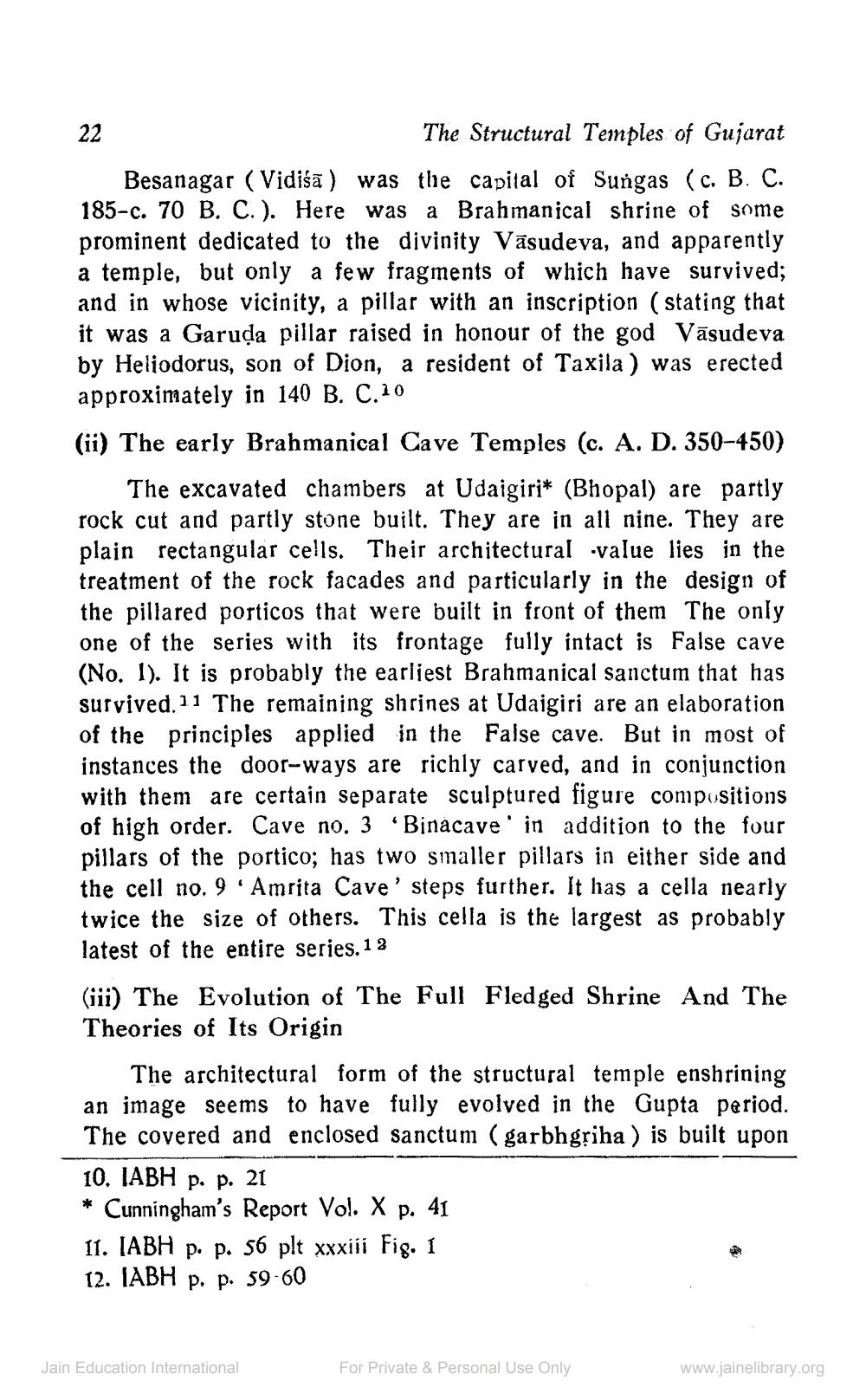________________
The Structural Temples of Gujarat Besanagar (Vidiśā) was the capital of Sungas (c. B. C. 185-c. 70 B. C.). Here was a Brahmanical shrine of some prominent dedicated to the divinity Vasudeva, and apparently a temple, but only a few fragments of which have survived; and in whose vicinity, a pillar with an inscription (stating that it was a Garuda pillar raised in honour of the god Vāsudeva by Heliodorus, son of Dion, a resident of Taxila ) was erected approximately in 140 B. C.10 (ii) The early Brahmanical Cave Temples (c. A. D. 350-450)
The excavated chambers at Udaigiri* (Bhopal) are partly rock cut and partly stone built. They are in all nine. They are plain rectangular cells. Their architectural value lies in the treatment of the rock facades and particularly in the design of the pillared porticos that were built in front of them The only one of the series with its frontage fully intact is False cave (No. 1). It is probably the earliest Brahmanical sanctum that has survived. 11 The remaining shrines at Udaigiri are an elaboration of the principles applied in the False cave. But in most of instances the door-ways are richly carved, and in conjunction with them are certain separate sculptured figure compositions of high order. Cave no. 3 Binacave' in addition to the four pillars of the portico; has two smaller pillars in either side and the cell no. 9.Amrita Cave' steps further. It has a cella nearly twice the size of others. This cella is the largest as probably latest of the entire series. 1 2
(iii) The Evolution of The Full Fledged Shrine And The Theories of Its Origin
The architectural form of the structural temple enshrining an image seems to have fully evolved in the Gupta period. The covered and enclosed sanctum (garbhgriha ) is built upon 10. JABH p. p. 21 * Cunningham's Report Vol. X p. 41 11. [ABH p. p. 56 plt xxxiíi Fig. 1 12. IABH p. p. 59-60
Jain Education International
For Private & Personal Use Only
www.jainelibrary.org




